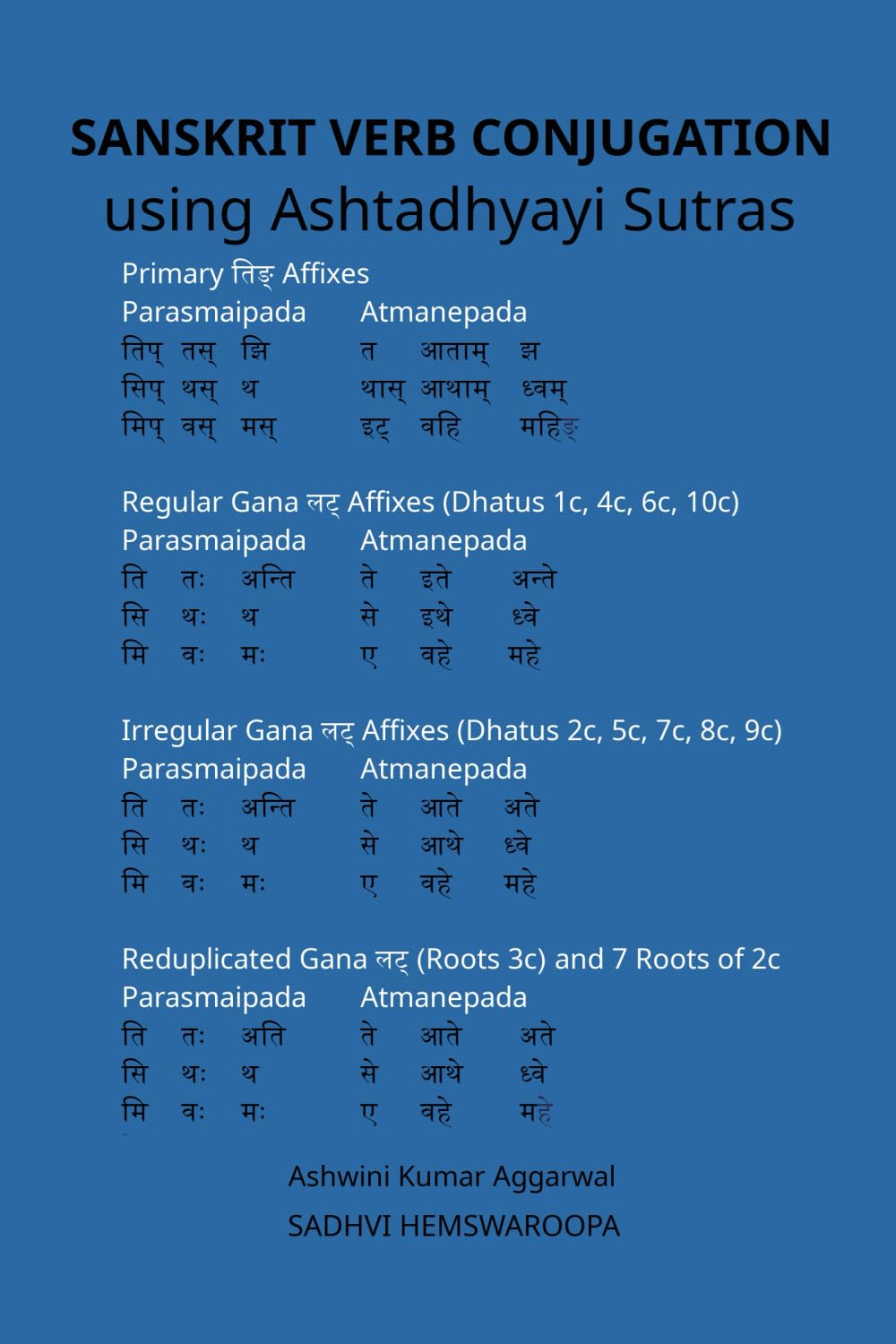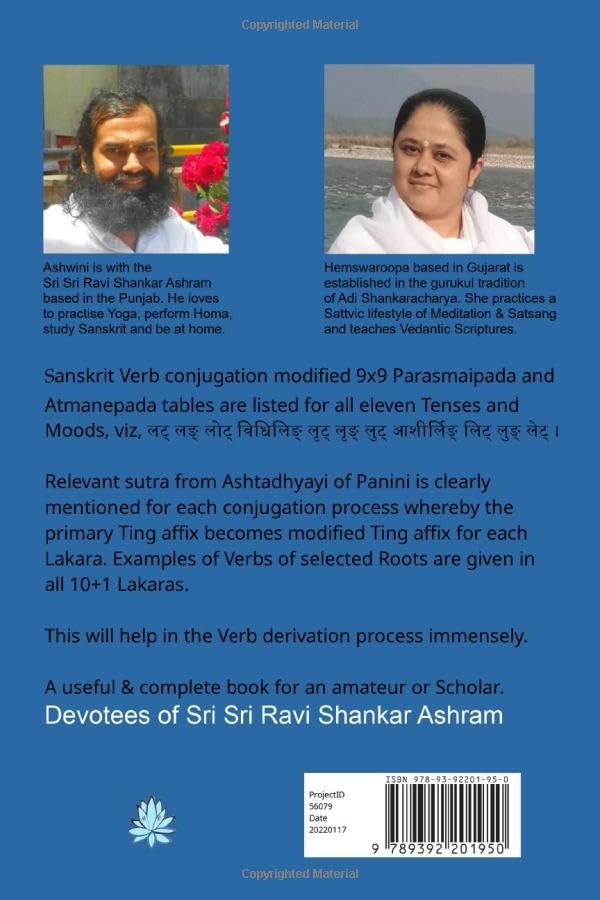Sanskrit is coming of Age. More and more Colleges and Universities are offering a degree course in this lingua franca of yore. Many schools across Europe and America are introducing Sanskrit to young learners. In India too there is a revival across the length and breadth, with committed organizations working to reach out to adults and children all over. To understand Sanskrit Grammar, the basic stuff is all about knowing the correct spelling of NOUNS and VERBS. This edition gives the process whereby Primary Ting Affixes get Modified to the Secondary Ting Affixes for the eleven Tenses and Moods. 3×3 person and number Parasmaipada and Atmanepada Ting Affix Tables are listed for: Sarvadhatuka Tenses and Moods 1 ltt Present Tense 2 lng Imperfect Past Tense – before from yesterday onwards 3 lott Imperative Mood – request 4 vidhiling Potential Mood – order (also known as Optative Mood) 11a lett Vedic usage Potential Mood – order Ardhadhatuka Tenses and Moods 5 lRtt Simple Future Tense – now onwards 6 lRng Conditional Mood – if/then in past or future 7 lutt Periphrastic Future Tense – tomorrow onwards 8 aashiirling Benedictive Mood – blessing (also used in the sense of a curse) 9 litt Perfect Past Tense – distant unseen past 10 lung Aorist Past Tense, before from now onwards 11b lett Vedic usage Potential Mood – order Primary ting Affixes Parasmaipada tip ts jhi sip ths th mip vs ms Atmanepada t aataam jh thaas aathaam dhvm itt vhi mhing Present Tense ltt LAt Regular Gana ltt ting Affixes for Dhatus 1c, 4c, 6c, 10c Parasmaipada ti tH anti si thH th mi vH mH Atmanepada te ite ante se ithe dhve e vhe mhe Irregular Gana ltt Affixes (Dhatus 2c, 5c, 7c, 8c, 9c) Parasmaipada ti tH anti si thH th mi vH mH Atmanepada te aate ate se aathe dhve e vhe mhe Reduplicated Gana ltt Affixes (Dhatus 3c) and 7 Roots of 2c Parasmaipada ti tH ati si thH th mi vH mH Atmanepada te aate ate se aathe dhve e vhe mhe It also lists the Ashtadhyayi of Panini Sutras to see what changes are involved to make the final affix. Well chosen Examples of selected Roots are given in all the 10+1 Lakaras, in Active Voice. ——– An invaluable book to see and derive correct spellings of Sanskrit Verbs in all 11 Tenses and Moods.
Sanskrit Verb conjugation using Ashtadhyayi Sutras (Ashtadhyayi of Panini)
$18.00
This textbook provides in-depth instruction on Sanskrit grammar for foreign language studies.
Additional information
| Weight | 0.249 lbs |
|---|---|
| Dimensions | 15.2 × 1 × 22.9 in |







Reviews
There are no reviews yet.